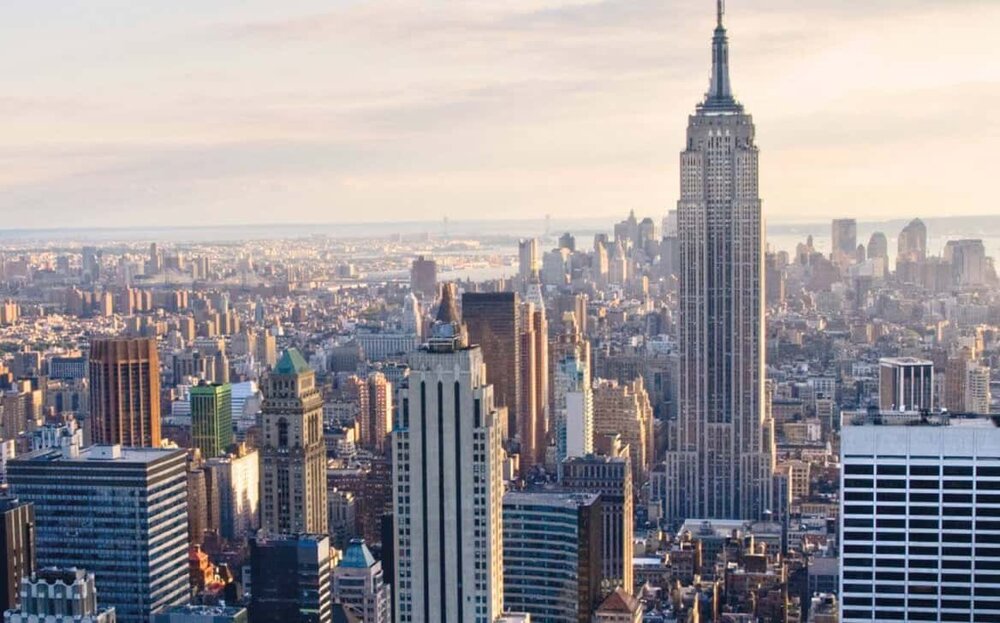Why New York?

Unlike New York Gov. Andrew M. Cuomo who well-meaningly called the novel coronavirus “the great equalizer”, recent evidence proves COVID-19 is anything but an equalizer at least when it comes to race.
In the city of New York, Black people's deaths are 28% while making up 22% of the population, as compared to 27% for whites who are 32% of the population, according to a recent New York state health department report.
It is not clear yet what the racial breakdown would look like for hospitalizations and deaths outside of hospital spaces.
Considering the high rate of infected cases, hospitalizations, and fatalities in the state, currently the issue might have a level of security dimension to it, causing a lot of speculation and questions.
In fact, it is not that the coronavirus discriminates itself; but it is the chronic, long-neglected ills of the American society that are popping up under the dire situation.
A spate of media reports exposes similar grim statistics for African-American communities as being disproportionally hit by the pandemic in other places across the country. Racial breakdowns of those affected in Louisiana, Michigan’s county of Detroit, Chicago, and Washington, D.C., are more eye-opening.
While one-third of Louisiana’s total population is black (33%), more than 70% of fatalities from COVID-19 are Black residents, according to Louisiana Gov. John Bel Edwards.
The situation in Chicago is not any better. Black people make up 70% of fatalities despite accounting for only 29% of the city’s population. The fatality rate in Washington, D.C., stands at 62.5% with African Americans forming 46% of the population. Michigan’s heavily black area of Detroit has turned into an epicenter, explaining as high as 85% of the state’s deaths from the pandemic.
A similar pattern prevails nationwide, as suggested by a recent hospital data report from the first month of the epidemic in 14 states of the U.S. released by the Centers for Disease Control and Prevention (CDC).
Among “580 hospitalized COVID-19 patients with race/ethnicity data, approximately 45 percent were white, 33 percent were black, and 8 percent were Hispanic, suggesting that black populations might be disproportionately affected by COVID-19”, the CDC report says. This is while African-Americans make up only 13% of the U.S. population, as contrasted to 76% accounted by white people.
These statistics become all the more meaningful once seen through a wider lens. Only in Chicago, as many as 116,530 African American/Black households received food assistance in 2017, accounting for 58.9% of all.
The trend is consistent with nationwide data. African Americans on average have the lowest household income among all racial/ethnic groups, except Native Americans. The poverty rate among African Americans is almost two times greater than that of the general U.S. population, according to a 2018 report by the Center on Budget and Policy Priorities.
About 1 in 5 African Americans (22 percent) live below the poverty line, compared with 1 in 8 (13 percent) in the general population, the same report adds.
Poverty has been long considered a major drag on access to health care among African Americans.
Despite the narrowing of the disparities in health care access between Black people and Hispanics and whites between 2013 and 2015 following the implementation of some of the provisions of the Affordable Care Act’s (ACA), they still face a harder time accessing required health care than whites, according to a 2017 Commonwealth Fund report. They are more likely to remain uninsured, skip needed health care because of cost, and go without a regular source of care, the same report highlights.
As more racial data on the pandemic becomes available, more experts have expressed concerns. by academia.
“The coronavirus is really exposing class- and race-based vulnerabilities, particularly in the form of what I think of as toxic inequality, especially the clustering of COVID-19 cases by community,” said Social Sciences Professor Robert Sampson in a report by the Harvard Gazette.
Epidemiologist Camara Phyllis Jones seems both concerned and at the same time hopeful that the pandemic becomes a wakeup call for those who deny the existence of racisms and its ripple effects on other spheres of live.
“If you asked most white people in this country today, they would be in denial that racism exists and continues to have profound impacts on opportunities and exposures, resources and risks. But COVID-19 and the statistics about black excess deaths are pulling away that deniability”, she said.
These statistics, however shocking and horrifying they are, do not seem to stand any chance of getting the attention of a lousy administration whose handling of the situation has drawn fiery rebuke from media and governors.
In the first comprehensive assessment of global health security capabilities, the GHS Index ranked the U.S. first among 195 countries.
“We're rated number one,” President Trump bragged about the ranking. But he was not mindful of the fact that whereas the country ranked exceptionally high in four out of six indicators, it did not fare so much well in the other two, healthcare access and risk factors such as political and security risk.
And racial inequality can be explained by both of those factors!
Leave a Comment